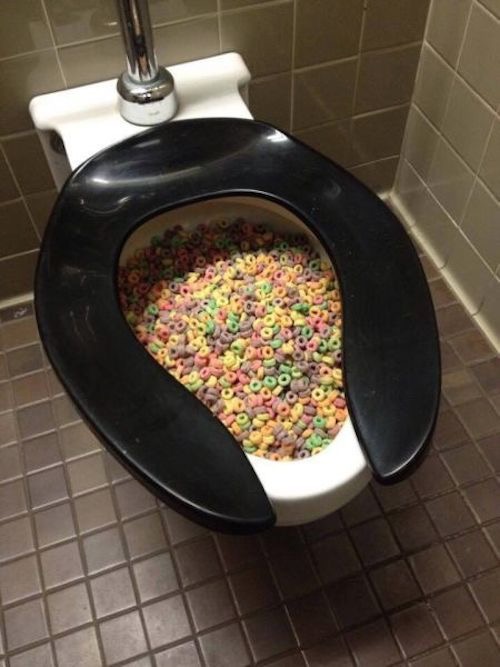Everybody may have their own assumption about Think Twice Before Flushing Food Down Your Toilet.

Intro
Many individuals are frequently confronted with the dilemma of what to do with food waste, especially when it concerns leftovers or scraps. One typical concern that occurs is whether it's all right to flush food down the toilet. In this article, we'll explore the reasons individuals might consider flushing food, the consequences of doing so, and alternate techniques for correct disposal.
Reasons why people might think about purging food
Absence of understanding
Some people may not know the prospective harm brought on by flushing food down the bathroom. They might incorrectly believe that it's a harmless technique.
Benefit
Purging food down the toilet might feel like a quick and easy remedy to dealing with unwanted scraps, especially when there's no close-by trash bin readily available.
Laziness
In some cases, individuals may just choose to flush food out of sheer idleness, without taking into consideration the consequences of their actions.
Effects of flushing food down the bathroom
Ecological impact
Food waste that ends up in waterways can contribute to pollution and harm water environments. In addition, the water used to flush food can stress water resources.
Pipes concerns
Flushing food can result in clogged up pipelines and drains, triggering expensive pipes repair work and hassles.
Sorts of food that must not be purged
Coarse foods
Foods with coarse textures such as celery or corn husks can obtain entangled in pipes and cause clogs.
Starchy foods
Starchy foods like pasta and rice can soak up water and swell, resulting in clogs in pipelines.
Oils and fats
Greasy foods like bacon or food preparation oils should never ever be flushed down the commode as they can solidify and create clogs.
Correct disposal techniques for food waste
Making use of a waste disposal unit
For homes equipped with waste disposal unit, food scraps can be ground up and purged with the plumbing system. Nevertheless, not all foods are suitable for disposal in this way.
Recycling
Certain food product packaging products can be recycled, lowering waste and lessening environmental influence.
Composting
Composting is an environmentally friendly method to deal with food waste. Organic products can be composted and used to enrich dirt for gardening.
The significance of appropriate waste management
Minimizing environmental injury
Appropriate waste management techniques, such as composting and recycling, assistance lessen contamination and maintain natural deposits for future generations.
Safeguarding plumbing systems
By staying clear of the method of flushing food down the commode, property owners can stop costly plumbing repair services and keep the honesty of their pipes systems.
Conclusion
To conclude, while it may be tempting to flush food down the toilet for convenience, it is essential to comprehend the potential effects of this activity. By adopting proper waste monitoring techniques and taking care of food waste properly, people can add to healthier pipes systems and a cleaner atmosphere for all.
FLUSH FOOD DOWN THE TOILET?
FLUSHING FOOD CAN CAUSE BLOCKED DRAINS IN YOUR HOME
All of the plumbing fixtures in your home are connected to the same sewer pipe outside of your home. This outdoor sewer pipe is responsible for transporting all the wastewater from your home to the Council sewer mains. Even small pieces of food that go down the kitchen sink can cause problems for your sewer. It should therefore be obvious that flushing larger bits of food, such as meat, risks a clog in either the toilet itself or the sewer pipes. Flushing greasy food is even more problematic because oil coagulates when it cools, coating the interior lining of your pipes.
THE TOILET IS NOT A BIN
Food isn’t the only thing that people shouldn’t be flushing down the toilet. People use the toilet to dispose of all kinds of things such as tampons, makeup wipes, dental floss, kitty litter and even underwear. Water goes to great lengths to educate residents about the high costs and stress placed on wastewater treatment systems simply from people flushing the wrong stuff down the toilet. It costs taxpayers millions of dollars each year, and homeowners thousands in blocked drain repairs.
FLUSHING FOOD IS A WASTE OF WATER
Flushing food is a waste of our most precious resource - water. In June this year Level 1 water restrictions were introduced to protect water supply from drought conditions. Much of New South Wales continues to be affected by prolonged drought with recent figures revealing up to 97 per cent of the state remains in drought. Depending on whether you have a single or dual flush toilet, every single flush uses between five and 11 litres of water. In the current climate this is a huge amount of water to be wasting on flushing food that should be placed in the bin (or better yet, the compost).
https://www.jabplumbingsolutions.com.au/blog/can-you-flush-food-down-the-toilet

I hope you liked our part about Is it safe to flush food (especially rice) down the toilet?. Thanks a lot for spending some time to browse our posting. Sharing is caring. Helping others is fun. Thanks for your time. Please check up our blog back soon.
Call Today